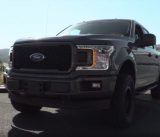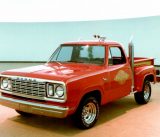
Source: Ford.com
Though the 2017 Chevrolet Silverado 1500 and the 2017 Ford F-150 might appear to have a lot in common, they’re actually quite different. Buyers who are open to driving either might find themselves swayed by some of these two trucks’ definitive differences. Read on to see how these two stack up—and which is the better truck.
Round 1: Pricing & Trim

Source: Chevrolet.com
Both Chevrolet and Ford offer an excess of trim levels. At $28,780, the basic configuration of the Silverad›o features a regular bed, regular cab, and a WT-trim with two-wheel drive and a V6 engine. The fully-loaded Silverado High Country, which features a long-wheelbase crew cab and four-wheel drive, can sell for up to $69,205 with options.
Ford has the cheaper base price. Buyers can get a bare-bones F-150 XL for $27,735. Then again, a loaded F-150 Limited will cost you $69,645, which is more than a Silverado.
Round 2: Options, Options, Options
Long gone are the days when pickup trucks were mere workhorses. Both the Silverado and the F-150 offer a list of modern creature comforts longer than your arm—from wireless cell phone chargers to self-parking systems. But the F-150 wins this round with goodies that aren’t offered on the Silverado, including adaptive cruise control, an automated trailer-backing system and a self-parking system.
Round 3: Powertrains and Efficiency

Source: Chevrolet
The engines Chevrolet has on offer—a V6 and two V8s—may seem dated, but they actually underwent a complete redesign in 2013-14. Cutting-edge features include variable valve timing, cylinder deactivation, and direct fuel injection. When all’s said and done, fuel ratings range from 15-18 MPG in the city to 20-24 MPG on the highway, depending on the engine.
Ford appears to have the more modern powertrain lineup, offering both an entry-level V6 and a “Coyote” V8. With twin-turbocharged engines and two EcoBoost offerings, Ford’s EPA fuel economy ratings are only mildly better—the V6 gets 18 MPG in the city and 24 MPG on the highway. Looks like Ford wins this round, too.
Round 4: Bonus Features
Chevrolet’s Teen Driver feature might be a selling point for parents, who can access this system to find out how far the vehicle was drive, its maximum speed, and whether any safety features were triggered during any given ride.

Source: Ford.com
With the Ford F-150, it’s the automatic trailer-backup system that drivers will love. After calibration, the driver can actually direct the trailer via a dial on the dashboard—the electric steering system will take care of steering the wheel as needed. It’s a nearly genius feature that takes the brainwork out of backing up a trailer—even experienced trailer drivers are bound to appreciate it.
The Winner? You Be The Judge
Yes, Ford appears to beat the Chevy on nearly all fronts—especially where technology is concerned—but that doesn’t mean drivers should rule out the Silverado. Most will find the design of the Silverado appealing, and while it doesn’t have a fancy new engine, Chevrolet’s engines have been reliably powering trucks for decades. It can also tow more.
Ultimately, this choice might come down to a matter of personal preference, needs, and budget, because both the F-150 and the Silverado are solid choices. In other words, they’re both winners in our eyes.





